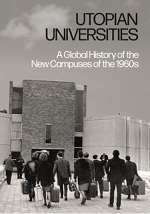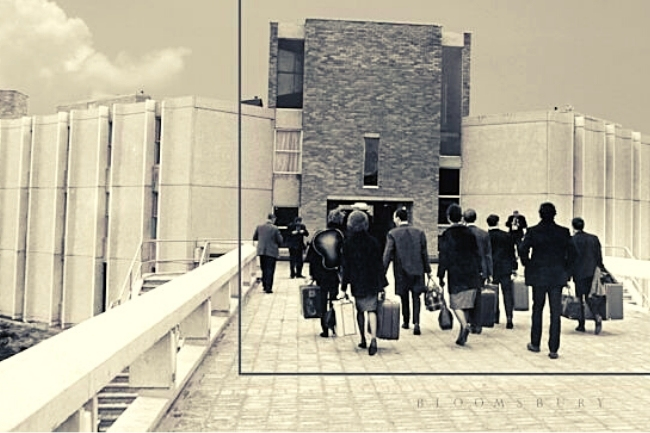Posts com a Tag ‘PELLEW Jill (Ed)’
Utopian Universities: A Global History of the New Campuses of the 1960s | Jill Pellew e Miles Taylor
Detalhe de capa de Utopian Universities: A Global History of the New Campuses of the 1960s
The 1960s were a period of expansion in many higher education systems. In their introduction to Utopian Universities, Pellew and Taylor note that approximately 200 new university campuses were created during the decade, and these initiatives provided a unique space to redesign the university in physical, organizational, and curricular terms. Emerging from a two-year project, this edited volume focuses on the developments and aspirations associated with a selection of these new universities, contributing to our understanding of this important developmental phase within higher education in some jurisdictions.
The first section of the book, which focuses on the development of nine new universities in the United Kingdom (UK) (including seven in England) is the strongest and most integrated component of the volume, in large part because of the relatively common contextual elements underscoring these initiatives, but also because the section includes a number of quite masterful thematic analyses. These include an outstanding chapter by William Whyte describing the influence of the “Redbrick” civic universities on the new British universities that emerged in the 1960s, and the fascinating assumptions underscoring the design and architecture of these new campuses. Leia Mais
Utopian Universities / Jill Pellew e Miles Taylor
Milles Taylor. Foto: Telegraph India /
 The most remarkable feature of the mould-breaking expansion of higher education that took place across the world in the 1960s was the foundation of some 200 entirely new universities. In most countries, growth had previously been confined largely to existing institutions or to lesser colleges of various kinds which were required to undergo a long period of tutelage and development before they could be considered for university status. But, in the 1960s, campuses were started from scratch, nearly always funded by the state, usually promising new institutional structures and innovative curriculum design, often boasting eye-catching new buildings by star architects. Examples of this phenomenon can be found across the world, especially in the countries of the former British empire, but, both at the time and since, developments in the UK attracted most attention, providing the models for what was to follow elsewhere. In the space of four years, seven new universities were opened in England: Sussex (1961), East Anglia [UEA], York (both 1963), Lancaster (1964), Essex, Kent, and Warwick (all 1965). Belatedly, and without either the brio or the funding of ‘the magnificent seven’, they were joined by the University of Stirling (1967) and the New University of Ulster (1968); the latter remains the last entirely new publicly-funded university to be established in the UK. Utopian Universities brings together twenty contributions on aspects of the new universities of the 1960s; two thirds of them concentrate on developments in the UK, with the rest addressing selected examples elsewhere, both in the former British dominions and in Europe. Leia Mais
The most remarkable feature of the mould-breaking expansion of higher education that took place across the world in the 1960s was the foundation of some 200 entirely new universities. In most countries, growth had previously been confined largely to existing institutions or to lesser colleges of various kinds which were required to undergo a long period of tutelage and development before they could be considered for university status. But, in the 1960s, campuses were started from scratch, nearly always funded by the state, usually promising new institutional structures and innovative curriculum design, often boasting eye-catching new buildings by star architects. Examples of this phenomenon can be found across the world, especially in the countries of the former British empire, but, both at the time and since, developments in the UK attracted most attention, providing the models for what was to follow elsewhere. In the space of four years, seven new universities were opened in England: Sussex (1961), East Anglia [UEA], York (both 1963), Lancaster (1964), Essex, Kent, and Warwick (all 1965). Belatedly, and without either the brio or the funding of ‘the magnificent seven’, they were joined by the University of Stirling (1967) and the New University of Ulster (1968); the latter remains the last entirely new publicly-funded university to be established in the UK. Utopian Universities brings together twenty contributions on aspects of the new universities of the 1960s; two thirds of them concentrate on developments in the UK, with the rest addressing selected examples elsewhere, both in the former British dominions and in Europe. Leia Mais



